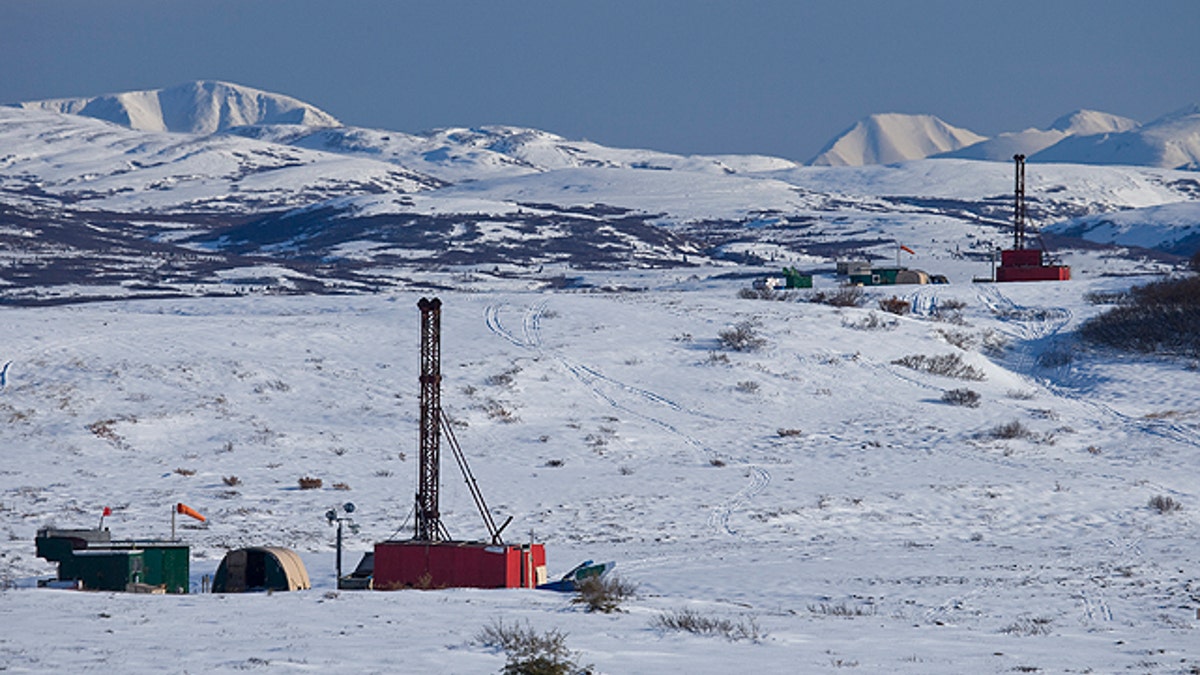
Using exploration drill rigs, The Pebble Partnership is currently analyzing what may be the largest undeveloped copper deposit in North America, located in southwest Alaska. (Courtesy: Pebble Partnership)
The U.S. Environmental Protection Agency said Friday it is endorsing analysis that would essentially block development of a massive gold-and-copper prospect near the headwaters of a world premier salmon fishery in Alaska.
The controversial mine, whose supporters say the EPA has colluded with environmentalists to block, "would cause irreversible damage to one of the world's last intact salmon ecosystems," according to EPA regional administrator Dennis McLerran. The EPA produced analysis showing environmental damage it believes the mine would cause, which if accepted would bar the project.
GOP lawmakers have accused the Obama administration of blocking the project, which would be the world's largest open-pit mine, without scientific support for its opposition. Those charges were fueled by failed efforts to subpoena a former EPA official and Alaska-based biologist whose emails seem to show the bid to get the Pebble Mine project killed dated back to 2009. Those emails — and memos indicating government officials worked early on with tribal leaders and environmental groups to oppose the venture — raised questions about the agency's claims that when it ultimately vetoed the gold-and-copper mine project, it did so based on scientific evidence.
[pullquote]
The House Oversight and Government Reform Committee sought to subpoena the EPA employee, Phillip North, but was told his whereabouts were unknown. In an echo of the controversy involving disappearing emails and hard drives at the IRS, the EPA told lawmakers it could not provide the emails a congressional committee has requested because an employee’s hard drive crashed.
EPA Administrator Gina McCarthy confirmed to the House Oversight Committee last month that her staff is unable to provide lawmakers all of the documents they have requested on the proposed Pebble Mine in Alaska, because of a 2010 computer crash.
“We’re having trouble getting the data off of it and we’re trying other sources to actually supplement that,” McCarthy said. “We’re challenged in figuring out where those small failures might have occurred and what caused them occur, but we’ve produced a lot of information.”
The state and Pebble Partnership, which was created to design, permit and run the mine, argue the EPA should not be able to veto the project before a mine plan is finalized and evaluated through the permitting process. Pebble has asked that a judge block the EPA from taking any additional steps, but no ruling has been made.
Tom Collier, CEO of the Pebble Partnership, said his group still needed to analyze the EPA's proposal. But he said the group was outraged that the federal agency took this next step with litigation pending and EPA's inspector general reviewing whether EPA followed laws, regulations and policies in developing its watershed assessment.
"We will continue to fight this unprecedented action by the Agency, and are confident we will prevail," Collier said in a statement.
The EPA analysis that shows the project would cause the loss of at least 5 miles of streams with documented salmon or loss of 1,100 or more acres of wetlands, lakes and ponds that connect to salmon-bearing streams or tributaries of those streams would essentially doom the project
EPA said as part of its analysis, it used plans filed by the mine's owner, Northern Dynasty Minerals, with the U.S. Securities and Exchange Commission in 2011. That information indicated the Pebble deposit is likely to involve excavation of the largest open pit ever built in North America, reaching a depth that rivals that of the Grand Canyon at nearly a mile, EPA said in its report.
The agency looked at three mine scenarios, one based on the worldwide median size deposit that contains copper-, gold- and molybdenum-bearing minerals, which was the smallest scenario analyzed, and two that it said were based on statements made by Northern Dynasty, of mine sizes of 2 billion tons and 6.5 billion tons.
EPA called its analysis conservative, focused on the use of certain waters in the region for disposal of materials associated with mining the Pebble deposit. The agency said it did not include impacts associated with build-out and operation of a mine, like roads, pipelines and housing for workers, or potential effects of accidents or mine failures.
EPA also said the proposal is specific to the Pebble deposit, and does not affect other deposits or claims.
In 2011, EPA, petitioned by Alaska Native tribes and others to protect Bristol Bay, initiated a review that culminated in the finding earlier this year that large-scaling mining in the Bristol Bay watershed posed significant risks to salmon and Alaska Native cultures that rely on the fish. The agency later invoked a rarely-used process through which it could ultimately restrict or prohibit development of the proposed Pebble Mine to protect the fishery.
The announcement Friday is the next step in that process. EPA plans to take public comment beginning Monday through Sept. 19 and to hold public meetings in Alaska next month. McLerran would then have to decide whether to withdraw the proposed action or send it to EPA headquarters for consideration.




